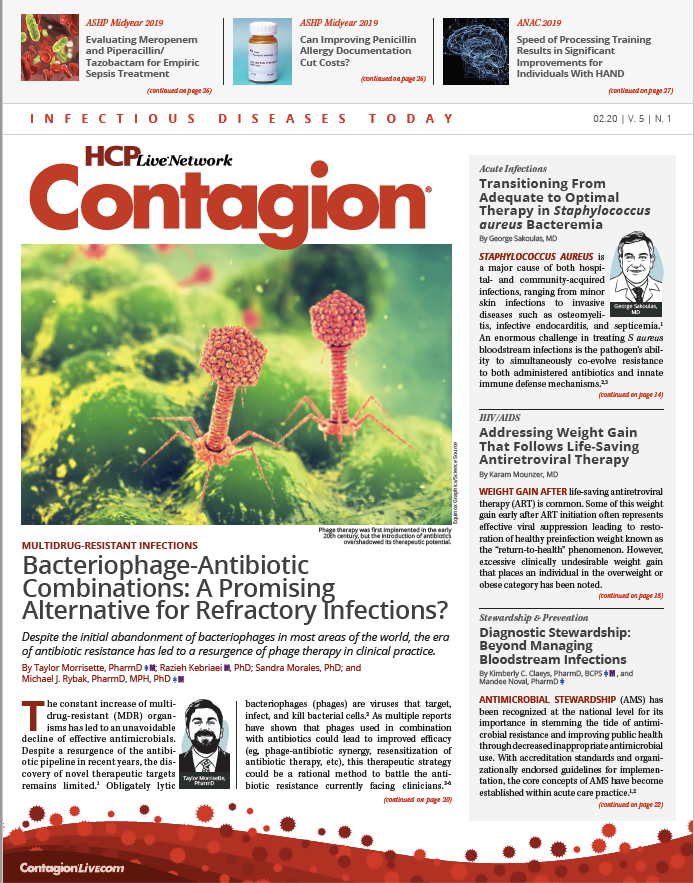"Don't Call Me the Berlin Patient, Call Me Timothy Ray Brown"
“My story is important only because it proves that HIV can be cured. And if something has happened, once in medical science, it can happen again,” Brown told Contagion®.
Timothy Ray Brown’s story is unique. In 1995 he was diagnosed with HIV while attending university abroad. Today, he is known to many as the “Berlin Patient.”
“My story is important only because it proves that HIV can be cured. And if something has happened once in medical science, it can happen again,” he told Contagion®.
At the Association of Nurses in AIDS Care Conference (ANAC 2019) Brown gave a plenary discussion and shared his story of how he became the first person to achieve long-term remission of HIV.
Brown’s HIV treatment began shortly after his diagnosis as he initiated a low-dose zidovudine regimen for which he remained on for 1 year. In the year after his diagnosis, protease inhibitors came onto the market and Brown switched to a 3-drug regimen. His life continued on normally for the next 10 years. “I came to the point where I could forget I was HIV positive,” he remarked.
However, things took a turn for the worst when Brown began to feel ill after a trip from Berlin to New York City. When he returned from the trip his illness continued and he sought care with an HIV specialist. He was then referred to an oncologist following persistent low red blood cell counts. He underwent a bone marrow biopsy and was diagnosed with acute myeloid leukemia (AML).
“That was my second death sentence,” Brown remarked. “HIV was a death sentence in 1995 and AML was also a death sentence.”
Brown said that one of his main priorities was to seek care for AML in an environment in which he would not be stigmatized for his HIV status.
The oncologist informed Brown that he would need to undergo chemotherapy and also submitted blood samples to Germany’s stem cell donor bank in case a transplant was necessary.
Brown’s leukemia went into remission following 4 rounds of chemotherapy; however, by the end of 2006, his illness rebounded, and he required a stem cell transplant. The German database found 267 possible donors.
Brown’s treatment team hypothesized that if they could find a donor with a CCR5 Delta 32 mutation they may be able to eliminate HIV from his body, this mutation occurs in approximately 1% of Northern Europeans. The investigators found a donor with the mutation on the 61st attempt.
On February 7, 2007, the morning of his stem-cell transplant, Brown took his last antiretroviral treatment. The recovery following the transplant was successful and 3 months later HIV was no longer detectable in Brown’s blood. He returned to work, began exercising, and even traveled back to the United States.
Unfortunately, Brown’s leukemia returned after his travels. “Strangely, the HIV was easier to cure than the AML,” he told the audience.
He returned to Berlin and underwent a second stem cell transplant with the same donor in February 2008. The recovery was not as easy as the first. He suffered from delirium and during a brain biopsy, an air bubble was left in his brain, which has affected his balance to this day. However, the biopsy did not find any signs of leukemia or HIV in his brain. This is significant because the brain has a reservoir where HIV can hide even if it is not present in the blood.
Brown has never met his stem cell donor, although he has filed the paperwork authorizing his name to be made available to the donor if he is interested.
“It could be that the donor has no idea that he changed history—that he has changed the HIV epidemic,” he said.
Brown’s leukemia went into remission and 12 years later he remains HIV free. Initially, when Brown’s incredible story was clinically published, he chose to remain anonymous and was referred to as the “Berlin Patient.”
“At some point, I decided I didn’t want to be the only person in the world cured of HIV,” Brown explained of his decision to come forward in 2010. “I wanted there to be more. And the way to do that was to show the world who I am and be an advocate for HIV.”
Today Brown considers himself an “HIV cure cheerleader.” He takes pre-exposure prophylaxis daily to prevent HIV acquisition and channels his energy into advancing cure research.
“I identify as a person who once had HIV and don’t anymore,” he said, elaborating further that his ultimate goal is to have many more individuals join him in being cured of the virus.
But until the day that a more sustainable cure is developed, Brown has a message for clinicians.
“Be compassionate to all of your patients and if you can, try to develop a personal relationship with your patients. There is no room for stigma.”
Videos from our interview with Brown are available here.

